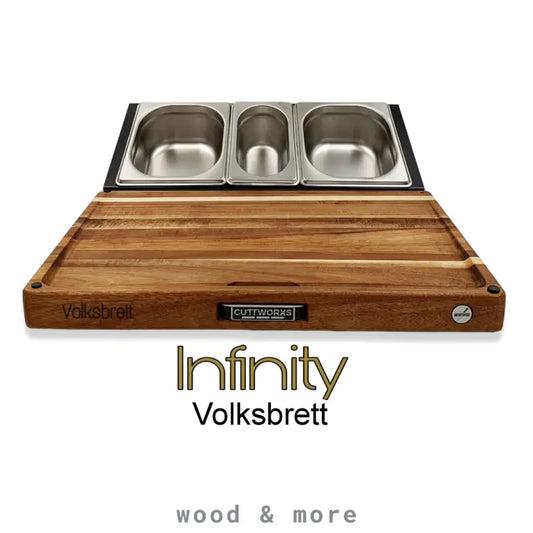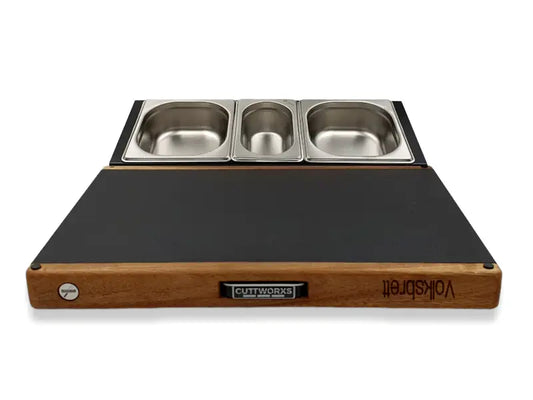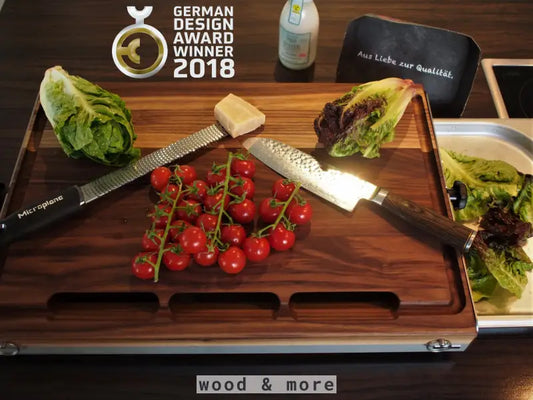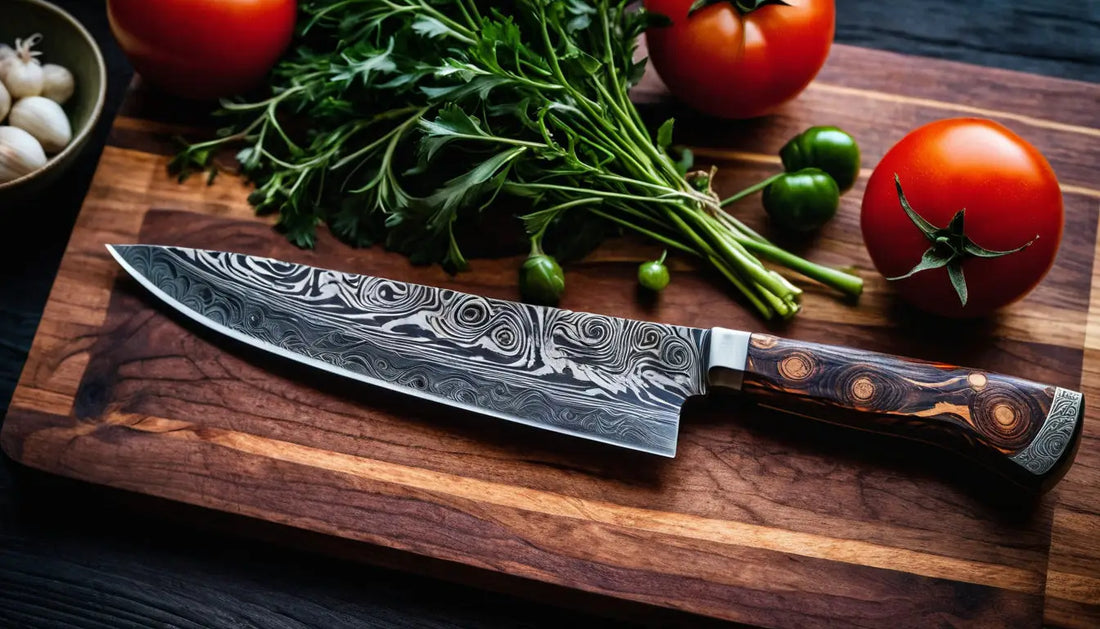
The best kitchen knife – More than just a tool
A knife is not just a tool. It is an extension of the hand, a companion that tells its own story with every preparation. A good knife can last a lifetime, it can inspire you, make you faster, more precise and more efficient - or it can be a constant source of frustration.
Anyone who has ever cut with a really great knife knows this feeling: the blade glides almost weightlessly through tomatoes, fish or meat, as if it were respectfully dividing the food, not cutting it up. A poorer knife, on the other hand, forces you to apply pressure, to make uneven movements - it turns an art into a laborious task.
But how do you find the perfect knife? How do professionals choose their knives? Is a hand-forged, unique piece really better than an industrial precision knife? And how much money should you actually invest?
Let us immerse ourselves in the fascinating world of knives – with all their tradition, precision and passion.
🔪 The soul of a knife – Why it is more than just a tool
I have held countless knives. Some felt like a blunt stone, others like an extension of my will. Once you have worked with a truly perfect knife, there is no turning back.
A good knife must master three things perfectly:
- It has to feel good – balance, weight, grip – the knife has to melt into you.
- It must have a great blade – sharp, durable, easy to maintain.
- It has to be made for the right job – no knife can do everything.
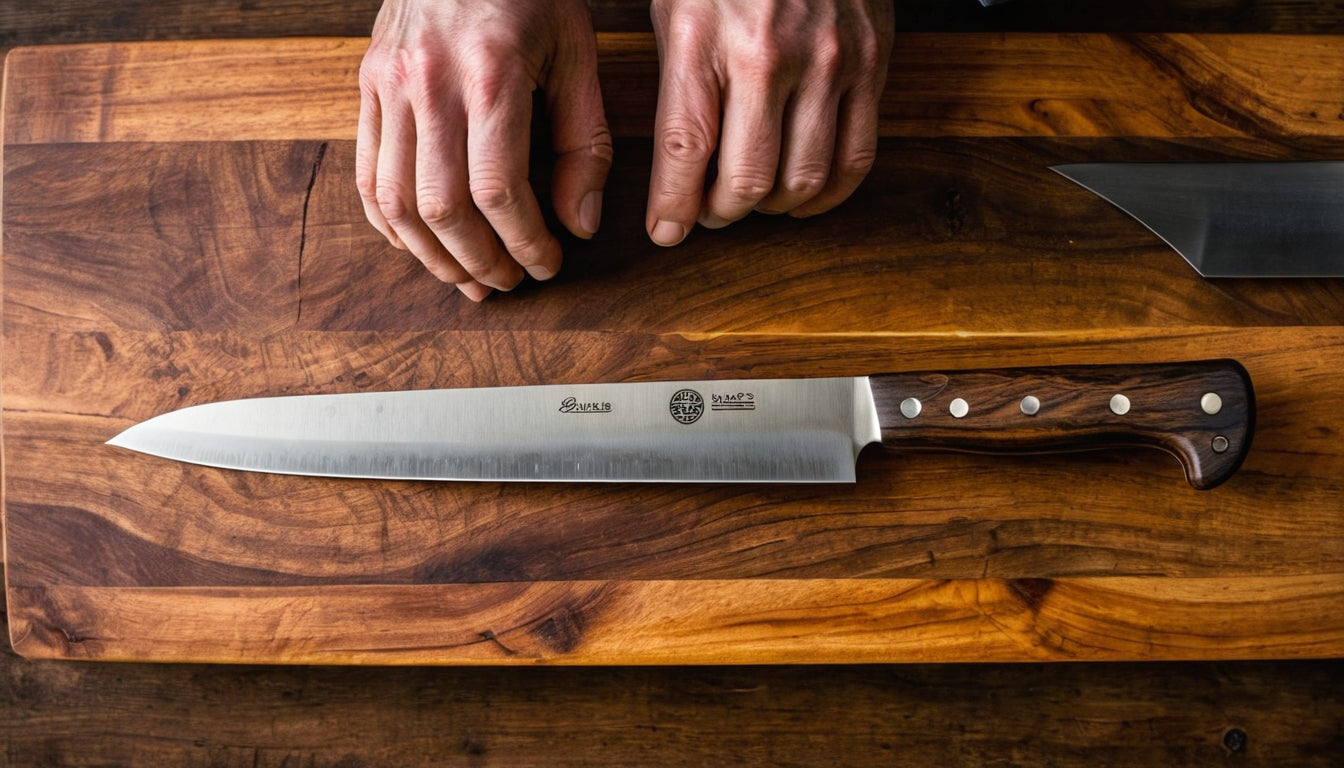
Every professional knows: There is no such thing as the one perfect knife. There is only the perfect knife for a specific purpose – and for your hand.
1️⃣ Ergonomics & Balance – A knife must feel right
Before we talk about steels, grinds and designs, comes the most important thing: the feeling in the hand.
- Weight & Balance: A heavy knife can help you cut with less force. A lighter knife is more maneuverable. A good knife always has a center of gravity that supports your natural movement.
-
The handle – wood, plastic or hybrid?
- Wood: Warm, natural, feels wonderful – but needs care.
- G10/Plastic: Hygienic, easy to clean, but sometimes lifeless.
- Hybrid: Combinations of wood and resin offer the best of both worlds.
-
Hand size & grip type:
- Big hands? A thicker handle is more comfortable.
- Small hands? A narrow handle gives more control.
- Japanese “Wa” grip or western full grip? A matter of taste, but a Wa grip often feels more direct.
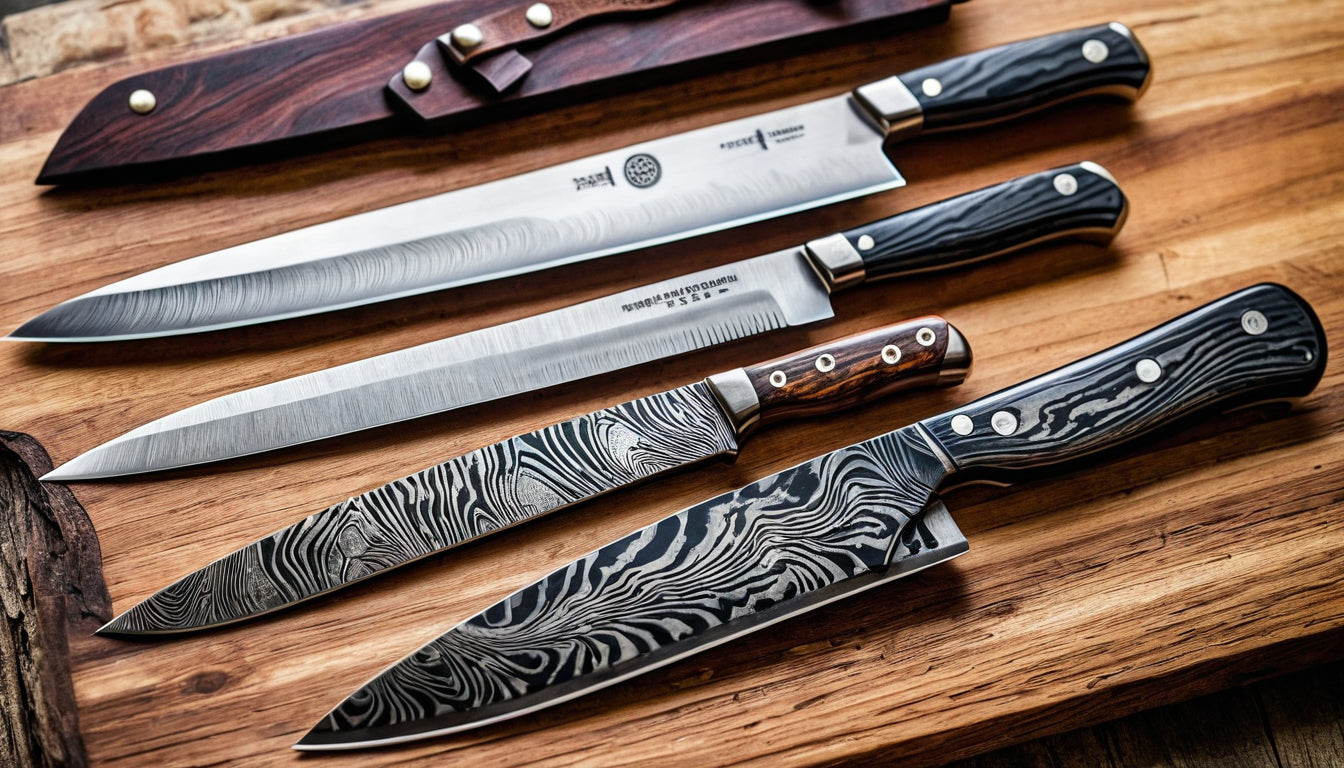
💡 Test: If you use a knife for ten minutes and your hand cramps – it is the wrong knife for you.
2️⃣ The blade – the heart of a knife
No matter how good a knife feels in your hand, if the blade isn’t convincing, it’s no good.
💡 Good blades have three things in common:
- ✔ They are spicy – and stay that way for a long time.
- ✔ They are easy to resharpen.
- ✔ They are optimized for their intended purpose.
3️⃣ The right grind – More than just sharp
The grind determines how the knife moves through food.
-
🔹 Japanese grind (10°-15° per side)
- Perfect for fine cuts.
- A Santoku or Gyuto feels almost weightless.
- But: Not ideal for hard foods!
-
🔹 European cut (20°-25° per side)
- More stability, more robust for everyday use.
- Perfect for bone-in meat or pumpkin.
- Can be resharpened more easily.
4️⃣ Hand-forged or mass produced?
Are there good mass-produced knives? Yes. Are hand-forged knives better? Not always.
5️⃣ How much does a good knife really cost?
- 💲 **50-100€:** Good entry-level knives (e.g. Zwilling, Victorinox).
- 💲💲 **100-250€:** High-quality series knives (Kai Shun, Wüsthof Ikon).
- 💲💲💲 **250-500€:** Hand-forged premium knives.
- 💲💲💲💲 **500€+:** Tailor-made unique pieces.
6️⃣ Professional knives: Which ones do you really need?
There are people who get by with just one knife. And there are professionals who have a whole collection because they know that every knife has its own purpose.
An all-rounder can do a lot - but not everything perfectly. Anyone who has ever cut vegetables with a Nakiri or cut up a piece of meat with a boning knife will immediately understand why professionals can work so precisely.
🔪 Gyuto/chef's knife – the all-rounder for almost everything
The Gyuto is the Japanese version of the classic chef's knife - and one of the most versatile knives ever. With its long, sharp blade, you can cut just about anything: meat, vegetables, fish, herbs.
🔪 Santoku – The fine precision specialist
The Santoku is the Japanese alternative to the Gyuto and has a shorter, wider blade. The name means "three virtues" - because it is perfect for meat, fish and vegetables.
🔪 Nakiri – The vegetable cutter
The Nakiri looks like a small cleaver, but it is made for vegetables. Its straight cutting edge makes it ideal for making perfect, clean cuts through carrots, zucchini or peppers.
🔪 Boning knife – The meat tool
The boning knife has a thin, flexible blade that is used to separate meat from bones or remove tendons. A good boning knife is sharp enough to slide precisely along the bones without shredding the meat.
🔪 Bread knife – For everything with a hard crust
The bread knife is the only serrated knife in the professional kitchen – and there is no better way to cut bread perfectly.
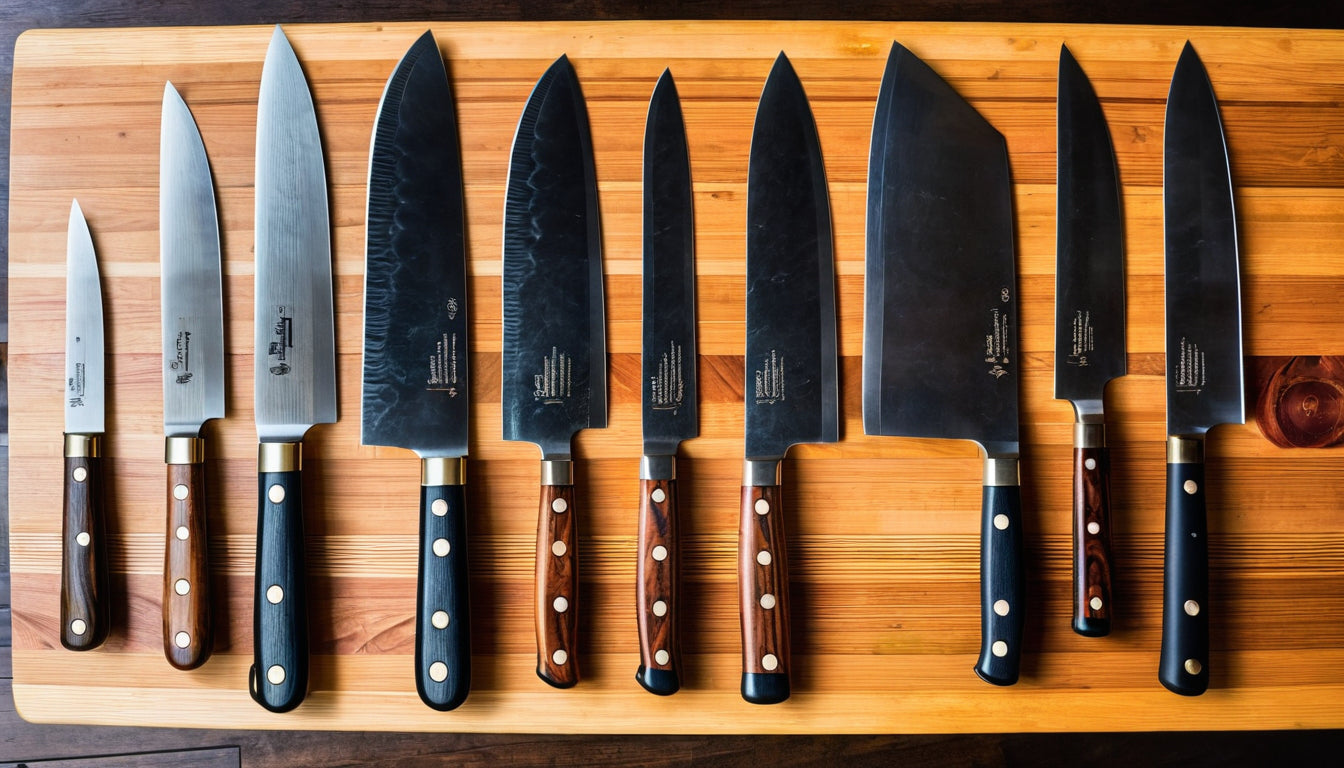
🔥 Conclusion: Find your perfect knife
- 🔪 Test weight & balance – it has to feel right!
- 🔪 Choose the right steel – Japanese precision or German robustness?
- 🔪 A good knife doesn't cost the earth - but a cheap knife costs nerves.
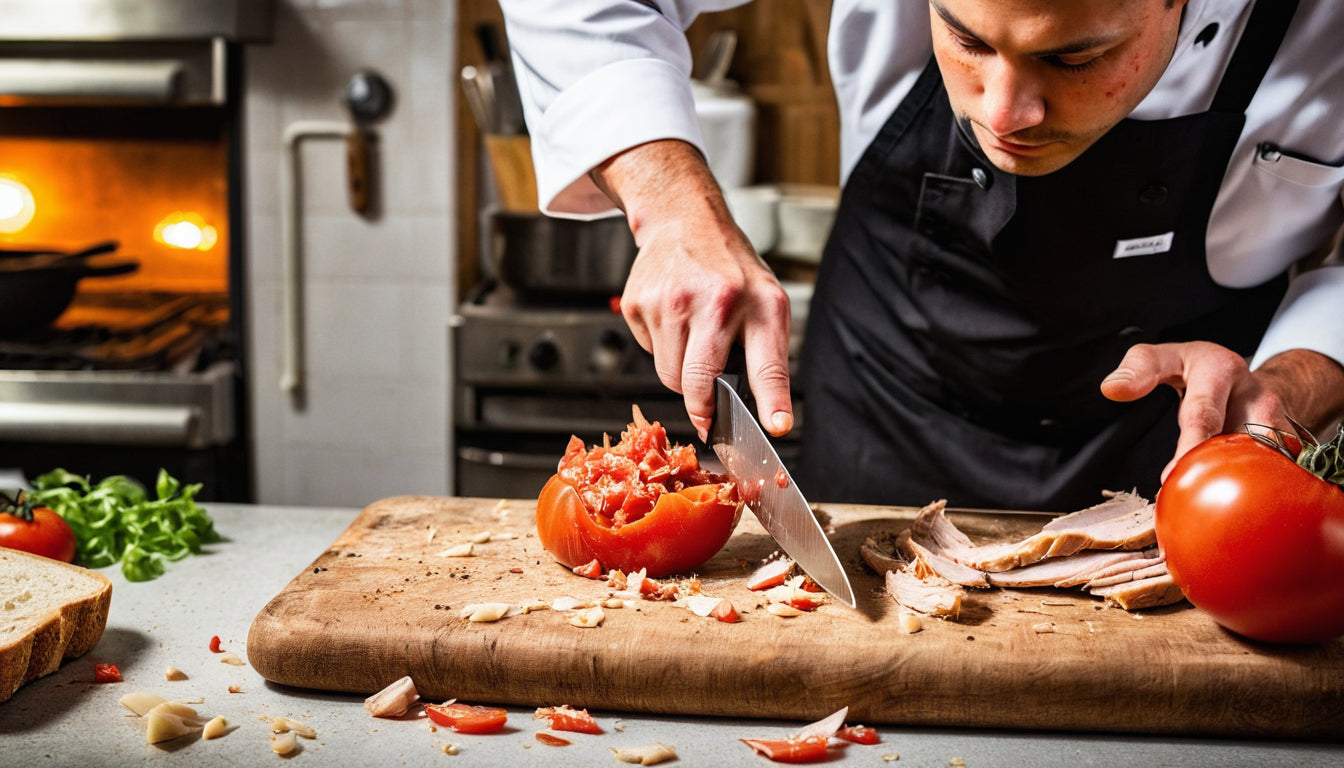
💬 What is your favorite knife? Which steel do you love? Let me know!











